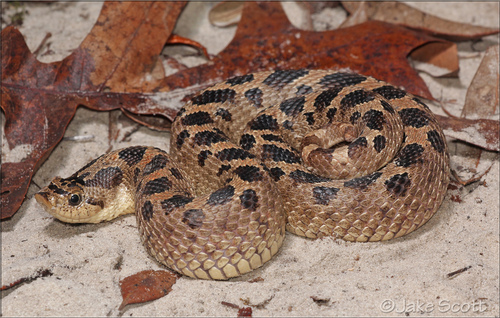
Southern Hognose Snake
The Southern Hognose Snake (Heterodon simus) is a master of disguise in the sandy terrains of the southeastern U.S. Known for its upturned snout and dramatic play-dead act, this small snake is a vital player in its ecosystem, expertly blending into its environment while controlling insect populations.
Length: 33 - 61 cm
Size
Grey, Red, Tan, Dark, Brown
Color
Low
Aggression
Vulnerable
Conservation Status
Decreasing
Population Trend
Characteristics
Heterodon simus, commonly known as the Southern Hognose Snake, is a small, burrowing snake native to the southeastern United States. It is characterized by its upturned snout, which it uses to dig in sandy soils. The snake exhibits unique defensive behaviors, including playing dead when threatened. Its coloration varies from brown to gray with darker blotches, providing excellent camouflage in its sandy habitat.
Distribution Range of the Southern Hognose Snake
Heterodon simus, commonly known as the Southern Hognose Snake, is native to the southeastern United States. Its geographical distribution primarily includes the coastal plains of North Carolina, South Carolina, Georgia, Florida, Alabama, and Mississippi.
Southern Hognose Snake's Habitat
Environmental Conditions
The Southern Hognose Snake typically inhabits sandy soils in open pine forests, sandhills, and dry, well-drained habitats. These areas often have a warm, temperate climate with distinct seasonal variations, including hot summers and mild winters.
Ecological Niche
Heterodon simus is adapted to a fossorial lifestyle, spending much of its time burrowed in loose, sandy soils. This ecological niche allows it to hunt for its prey, primarily amphibians like toads, which it subdues using its unique upturned snout to dig in sandy substrates. The snake is also known for its defensive behaviors, such as playing dead when threatened.
Copyright @ Nature Style Limited. All Rights Reserved.
 English
English